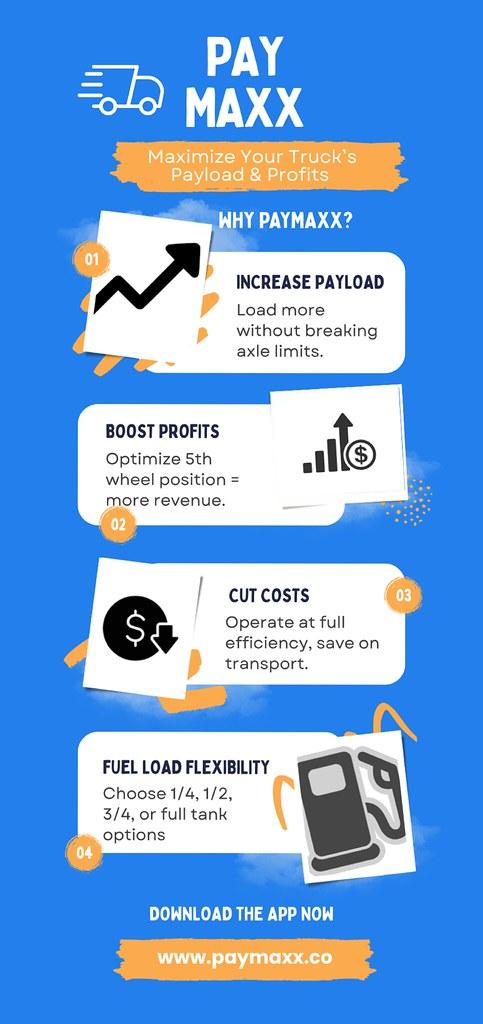Table of Contents
- Understanding the Domain Market Landscape
- Identifying High-Value Domain Opportunities
- Strategic Techniques for Flipping Domains Successfully
- Maximizing Profits Through Effective Marketing
- Navigating Legal Considerations in Domain Transactions
- Q&A
- To Wrap It Up
Understanding the Domain Market Landscape
The domain market operates much like any other marketplace, characterized by its unique trends, values, and buyer behavior. Understanding these intricacies is essential for anyone looking to profit from flipping domains. Key factors influencing the domain landscape include trends in technology, branding strategies, and consumer behavior. Buyers tend to favor short, memorable names or those that resonate with current cultural phenomena. Staying updated with emerging trends can give domain flippers a significant edge in identifying potentially lucrative acquisitions.
A core component of this market is the evaluation of domain value. Various metrics can be used to assess how much a domain might sell for, including:
- Length: Shorter domains often have higher value.
- Keywords: Domains containing popular search terms can attract more buyers.
- Extension: Domains with .com extensions typically hold more value than others.
- Brand Potential: Names that are easy to brand can skyrocket their price.
Entering the domain flipping arena requires more than just buying and reselling. Flippers need to cultivate an understanding of market demand and utilize effective sales strategies. For instance, creating an attractive listing with quality visuals, and SEO-optimized descriptions can enhance visibility. Below is a simplified table highlighting different strategies and their potential impacts on sales:
| Strategy | Potential Impact |
|---|---|
| SEO Optimization | Increases organic traffic and visibility |
| Quality Visuals | Attracts buyers and enhances appeal |
| Effective Pricing | Drives quicker sales |
| Targeted Outreach | Connects with interested buyers directly |


Identifying High-Value Domain Opportunities
When venturing into the world of domain flipping, is crucial for realizing substantial profits. Start by researching trending keywords that resonate with popular industries or emerging technologies. Use tools like Google Trends and Ubersuggest to find keywords that have growing search volume. Focus on domains that incorporate these keywords naturally, as this can significantly enhance their marketability.
Another important aspect is to evaluate the length and memorability of potential domain names. Short, catchy domains are always in demand because they are easier for users to remember and type. Consider names that are no longer than 15 characters, ideally featuring a .com extension. Beyond length, think about the following characteristics:
- Brandability: Can the domain name easily become a brand?
- Unique spelling: Avoid confusing spellings that might hinder user recall.
- Common phrases: Consider domains that include popular sayings or idioms.
conduct a thorough analysis of the domain’s history and performance metrics using tools like Wayback Machine and SEMrush. Understanding background factors such as SEO rankings, backlinks, and previous sales can provide insights into the domain’s potential value. Always ensure that the domain has a clean history with no penalties, as this can significantly affect your investment. Use the table below to summarize key attributes that contribute to a high-value domain:
| Attribute | Importance |
|---|---|
| Keyword Richness | High |
| Length | Medium |
| Extensions (.com preferred) | High |
| Brandability | High |
| Market Trends | Medium |


Strategic Techniques for Flipping Domains Successfully
To achieve success in domain flipping, it’s crucial to conduct thorough market research. Understanding current trends helps identify which types of domains are in demand. Utilize platforms like Google Trends, Ahrefs, or SEMrush to analyze search volumes and popular keywords. By focusing on niches with growing interest, you can make informed decisions about purchasing domains that are likely to appreciate in value. Additionally, competitor analysis can provide insights into which domain extensions and keywords are garnering attention.
Another key technique involves optimizing your domain’s details to enhance its attractiveness. This includes ensuring that the domain name is memorable, concise, and relevant to potential buyers. Aim for names that are easy to spell and pronounce. Furthermore, consider the domain extension; while .com domains generally hold more value, niche-specific extensions can also be appealing. A well-structured landing page can further entice buyers, showcasing the potential uses of the domain and emphasizing its unique selling points.
leverage a variety of sales platforms and marketing strategies to reach a wider audience. Listing your domains on multiple marketplaces, such as Flippa or Sedo, increases visibility. Additionally, don’t underestimate the power of social media and domain forums. Create targeted ads that highlight key features of your domains, and engage with potential buyers through relevant forums. Explore direct outreach to businesses that could benefit from your domain to form strategic partnerships. Here are some platforms you might consider:
| Platform | Type | Notes |
|---|---|---|
| Flippa | Marketplace | Well-known for domain trading |
| Sedo | Marketplace | Offers auction and fixed-price listings |
| GoDaddy Auctions | Marketplace | Leverages GoDaddy’s large customer base |
| eBay | Marketplace | Good for reaching a general audience |
| Social Media | Marketing | Utilize platforms like Facebook and Twitter |


Maximizing Profits Through Effective Marketing
In the competitive realm of domain flipping, an effective marketing strategy is essential for maximizing profits. One of the primary methods to enhance your visibility is through SEO optimization. By integrating relevant keywords into your domain listings, you can improve search engine rankings, making it easier for potential buyers to discover your domains. Additionally, creating compelling, keyword-rich descriptions can entice buyers and increase perceived value. Utilize tools like Google Keyword Planner to identify trending terms related to your domains, allowing you to craft tailored content that resonates with your target audience.
Another crucial factor is leveraging social media platforms. Engaging with niche communities on sites like Twitter, Facebook, and LinkedIn can significantly extend your reach. Share your listings in relevant groups and forums while providing insights into the potential uses of the domains. Moreover, consider running targeted ads that showcase your most valuable domain names to a wider audience. By establishing a solid online presence, you can cultivate a sense of trust and increase the likelihood of successful transactions.
consider implementing an email marketing campaign to reconnect with previous buyers or leads. Craft targeted emails that include updates on new domain acquisitions or potential sales, enticing your audience with exclusive offers. Don’t forget to segment your list based on previous interactions or interests; this ensures personalized communication that can significantly boost engagement rates. Below is a simple table illustrating effective marketing strategies and their potential impact on profitability:
| Marketing Strategy | Potential Impact |
|---|---|
| SEO Optimization | Enhanced Visibility |
| Social Media Engagement | Wider Audience Reach |
| Email Marketing | Increased Buyer Engagement |


Navigating Legal Considerations in Domain Transactions
When diving into the world of domain flipping, understanding the legal landscape is crucial for safeguarding your investments and ensuring a smooth transaction process. The first aspect to consider is the legality of the domain name itself. It’s essential to ensure that the domain does not infringe on any existing trademarks. Conducting a thorough trademark search can save you from potential legal disputes down the line. Additionally, verify that the domain is registered correctly, as improperly registered domains can lead to ownership challenges.
Another important legal consideration involves the transfer process of domain ownership. The transfer of a domain must align with the rules set forth by the domain registrar. Often, registrars require the seller to unlock the domain and provide an authorization code to facilitate a smooth changeover. Buyers should always confirm that the seller has the right to transfer ownership before finalizing any deal to avoid potential issues. It’s advisable to use an escrow service for high-value transactions to further minimize risk.
it’s wise to consider any tax implications that may arise from domain flipping. Depending on your jurisdiction, profits made from buying and selling domains could be subject to capital gains tax. Keeping detailed records of purchase prices, sale prices, and any associated expenses can simplify this process when tax season arrives. Consulting with a tax professional can provide clarity and help you develop strategies to manage your obligations effectively.
Q&A
Q&A on Domain Flipping Profits
Q1: What is domain flipping? A1: Domain flipping is the practice of purchasing domain names with the intent to sell them later at a higher price. It’s akin to buying real estate; you acquire undervalued assets, enhance their appeal, and then market them to potential buyers.Q2: How can I identify profitable domain names? A2: Look for domain names that are short, memorable, and easy to spell. Keywords relevant to popular niches can also increase a domain’s value. Tools like Google Trends, keyword research tools, and examining expired domains can help you find hidden gems.
Q3: How much money can I make from domain flipping? A3: Profits can vary widely. Some flippers make a few hundred dollars on each domain, while others sell high-value domains for thousands or even millions. Your earnings will depend on your research, investment, and marketing strategies.
Q4: What are the costs involved in domain flipping? A4: Initial costs typically include the purchase price of the domain, registration fees, and, if desired, renewal fees. Additional expenses can include website hosting or marketing, especially if you plan to develop the domain before selling it.
Q5: Should I develop my domain before selling it? A5: Developing a domain can potentially increase its value by adding content, building traffic, and showcasing its capabilities. However, it requires time and effort. For those looking for quicker profits, selling an undeveloped domain that has inherent value might be preferable.
Q6: How do I sell a domain name? A6: You can list your domain on various online marketplaces such as Sedo, Flippa, or GoDaddy Auctions. Additionally, you can approach potential buyers directly or use social media and networking to broadcast your offering.
Q7: Are there risks involved in domain flipping? A7: Yes, domain flipping carries risks, such as market fluctuations and overpaying for domain names that don’t sell. Sometimes, a domain might not appreciate as expected, or the niche could diminish in popularity. Conduct thorough research to mitigate these risks.
Q8: What legal considerations should I be aware of? A8: Be cautious about trademark infringements when acquiring domain names. Selling a domain that violates someone else’s trademark can lead to legal issues. It’s advisable to familiarize yourself with intellectual property laws related to domain ownership.
Q9: Can anyone become a successful domain flipper? A9: Absolutely! Anyone with a willingness to research, learn, and adapt can succeed in domain flipping. It requires patience, a keen sense for trends, and sometimes a bit of luck, but many individuals have turned domain flipping into a lucrative side hustle or full-time business.
Q10: What are the key takeaways for someone starting in domain flipping? A10: Start by researching and understanding the market, focusing on niche areas where you have knowledge or interest. Build a small portfolio of domains, learn from your sales, and continuously refine your strategies based on what works best for you. Happy flipping!

